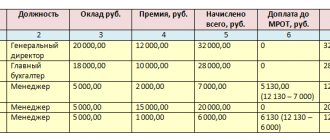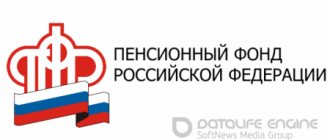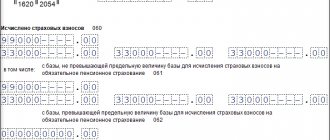Main conclusions
- Foreign investors are in no hurry to invest in free economic zones of the Far East: the majority of residents are businesses from Russia. Some foreign projects receive resident status, but cannot begin operating activities for a long time, including due to the high degree of uncertainty in the modern Russian market, bureaucracy and the lack of clear rules of the game for investors.
- Free economic regimes in the Far East need to develop a long-term development strategy. Many priority development areas (ASEDs) have approved long-term development plans, but no strategy has been written for the Free Port of Vladivostok (FPV), despite the fact that it has existed for four years.
- Often, local municipal authorities are a serious barrier to the work of foreign investors who are unfamiliar with the internal environment of the Russian market. Many local authorities are distrustful of foreign businesses, which hinders their activities within the free economic zones of the Far East.
- Russian and foreign residents of free economic zones in the Far East are often faced with changes in federal and regional Russian legislation and legal norms that apply to them retrospectively and affect their operating activities.
- The creation of free economic zones in the Far East does not solve the general socio-economic problems of the region, which in turn affect the attractiveness of the Far East for foreign investors. The federal government should pay attention to the problems with the outflow of qualified personnel from the region, as well as the degradation of customs and transport infrastructure in the Far East.
SEZ classification
SEZs can be classified by type of economic activity, by degree of organization, by the degree of integration into the national economy, by the principle of nationality and by the systems of benefits provided.[4][5]
By type of economic activity
Description below.
- Trade zone
(
TZ
) is a territory outside the national customs territory. Operations for storing goods and their pre-sale preparation (packaging, labeling, quality control, etc.) are carried out inside. They have a fairly quick payback. Main types: Free ports - Free cities
- Free trade zones (not to be confused with FTA integration!)
- Free customs zones
- Duty Free Stores
(
PPZ
) - part of the national customs territory within which the production of specific industrial products is established; At the same time, investors are provided with various benefits. It can often serve the purposes of export orientation or import substitution. Main types:
- Single industry zone
(
TVZ
) - a territory outside the national customs territory, within which research, design, engineering bureaus and organizations are located. Aimed at developing R&D and commercializing results. Some types:
- technopark
- Free banking zone
is separate, but there are differences.
- Free zone
By degree of organization
- Territorial SEZ - benefits are provided in a specific territory, often there is a developed infrastructure. Their types: Enclave zones - liberal policy, but in the area of only one region, which reduces their connections with other regions of the country. There are often free ports, free trade zones (to be distinguished from FTAs - the degree of integration!), export-production zones
- Open Zones - There are customs control policies, but there is not as much restriction, making them more connected to other regions. They are often complex zones, service zones: financial, tourist and recreational.
- It happens most often as mixed.
By degree of integration into the national economy
- Zones integrated into the national economy. The guideline is the development of ties with sectors of the national economy that are not included in the zone; assistance in solving the problem of export production; increasing the technological level of production; improving product quality, meeting internal needs. They are often complex, technical and innovative, etc.
- Enclave (export-oriented). Production is focused on export and replenishment of foreign exchange earnings, and the connection with the domestic economy is minimal. That is, work within the framework of programs for selling goods on the foreign market. They are often commercial and industrial-production: zones of one enterprise, export-production zones, various high-tech companies.
Based on nationality
- National Within one state
- Within two or more states
By benefit systems
- Tax: tax “holidays” - partial or complete exemption of investors from paying taxes on property and property, VAT, etc. (in accordance with the law on the SEZ, which came into force on January 1, 2006: residents of the SEZ are exempt from paying for five years land, property and transport taxes, income tax is reduced by 4% (to 16%). For TVZ, a reduction in the unified social tax rate is also provided from 26% to 14%).[6]
- Trade, or customs (import), - partial or complete exemption from import duties on semi-finished products, raw materials, etc., imported for use within the zone;
- Customs (export) - partial or complete exemption from export duties on products manufactured within the zone.
- Financial - investment subsidies, government preferential loans, reduced rates for utility bills and rental of industrial premises.
- Administrative - a simplified procedure for registering enterprises, a simplified procedure for the entry and exit of foreign citizens, unimpeded export of legally received profits by foreign citizens abroad.
TORs, FPV and the turn to the East
The Far East was designated as a special region for socio-economic development in 2012, when a specialized ministry was created. Starting in 2014, it was in the new Ministry of Development of the Far East that they began to actively discuss the topic of turning to the East. One of the main components of the turn was seen to be the creation of free economic zones in the Far Eastern Federal District, which directly borders the leading Asian markets - South Korea and China. The creators of free economic zones were in no hurry to set the main goal of attracting Asian investors, but the launch of such regimes in close proximity to East Asia, the most dynamically developing region of the world, cannot but set a certain level of expectations.
In 2014, we signed a federal law on the creation of priority development territories (ASEZ) in the Far East. At first there were six priority development areas, now their number has grown to 18. In 2020, the Free Port of Vladivostok (FPV) was created, which included only the territory of the Primorsky Territory, and today covers 22 municipalities in the Far East.
If FPV is a free economic zone that allows residents to engage in almost any business, then ASEZs have strict industrial specialization. For example, the Khabarovsk ASEZ concentrates on industry and logistics, the Nadezhdinskoye ASEZ focuses on timber processing, and the Belogorsk ASEZ focuses on agriculture. Depending on their specialization, businesses from Russia and abroad choose a specific ASEZ to implement their project. Another key difference between ASEZs and FPVs is that they provide residents with basic infrastructure and communications. An alternative advantage of FPV is that residents of this zone have the right to receive a land plot without an auction. Also, for residents of ASEZs and FPV, the initial amount of capital costs is different: FPV projects are obliged to invest 5 million rubles over three years, and participants of ASEZs must overcome the barrier of 500 thousand rubles of minimum investment. The remaining benefits of ASEZs and FPVs are approximately the same: residents are exempt from income and property taxes for the first five years and from land taxes in the first three years in FPVs and in the first five years in ASEZs. Also, residents of special economic regimes of the Far East have the right to create a free customs zone around their enterprise, which allows duty-free import of equipment and export of products. One of the most attractive preferences for investors is a reduced social tax rate for 10 years - from 30 to 7.6%, as well as the opportunity to attract foreign labor without taking into account quotas (however, there is still a limit of 20% of the total project personnel).
The transition to a market economy involves increasing the degree of its openness to the outside world by intensifying foreign economic activity. One of the most important forms of economic relations is free economic zones (FEZ). They represent a special type of state regulation of foreign economic activity.
SEZ is a relatively new form of organizing economic activity, which appeared in world practice in the late 1950s - early 1960s and became widespread in the 1970s. Today there are from 400 to 2000 such zones in the world. However, the term “free economic zone” (and its other variants, of which about 30 are known, for example, free enterprise zone) is used in different countries to characterize territories that are completely different in their status and the goals that they face. SEZs operate in more than 80 countries: in industrialized countries - the USA, Japan, Germany, Great Britain, in newly industrialized countries, in developing countries and in countries transitioning to a market economy. About 10% of world trade turnover passes through free economic zones, and the growth rate of export and import volumes in them is very high.
Free economic zones are formed, as a rule, in sea and river ports, international airports, near main railway and highway lines, and tourist centers in certain industrial areas.
A free economic zone in Russia is a territory in which a special regime is established for the economic activities of foreign investors and enterprises with foreign investments, as well as domestic enterprises and citizens. The procedure for carrying out economic activities of foreign investors, enterprises with foreign investments and the conditions for preferential export-import-customs, tax, currency, banking, visa, labor and other types of regulation in the zone are established by the legislation of the Russian Federation, as well as by the decision of the relevant local authorities. SEZs are created to accelerate the socio-economic development of Russia and its regions, comprehensive development of the country's natural resources, increase its export capabilities, expand the production of high-quality and import-substituting products based on the development of trade, economic, scientific and technical cooperation with foreign countries.
The creation of free economic zones helps solve a number of problems.
Ø Ø Attracting foreign capital, technologies, forms and methods of labor organization into the economy of the Russian Federation.
Ø Ø Formation of a market infrastructure for the expansion of international economic relations (including monetary and credit, insurance, transport, information), allowing the use of zones as an intermediary between the world economy and the world market and the domestic economy.
Ø Ø Development of the export base and growth of foreign exchange earnings.
Ø Ø Accelerating the implementation of scientific and technological progress through both foreign and domestic scientific developments and know-how and their transfer for widespread use to the foreign market and to the Russian Federation.
Ø Ø Approbation at the zonal level of new forms of management.
Ø Ø Practical training of domestic specialists in the techniques and methods of international business.
Based on the tasks of forming a particular zone, corresponding requirements are imposed on its placement. The general requirements for the location of free economic zones include:
· · favorable transport and geographical position in relation to external and internal markets (as a rule, territories that have a border location and have developed transport communications, especially port cities, correspond to this);
· · developed production potential, availability of industrial and social infrastructure;
· · the presence of a territory with unique natural resource potential in terms of reserves and value (primarily reserves of hydrocarbons, non-ferrous metals, forest resources, etc.).
Therefore, the territories that are most favorable for the placement of SEZs, as a rule, have a border position in relation to foreign countries, including former Soviet republics, and also have sea trade ports and a main transport network (railway, road, airports), established industrial , scientific and cultural centers, areas where the most valuable natural resources are concentrated. In some cases, the creation of a SEZ is also advisable in areas of new economic development that do not have developed industry, production and social infrastructure. The SEZ is also designed to solve long-term large national programs (strengthening the country's fuel, energy and mineral resource base, etc.).
On the territory of Russia, depending on the goals and objectives, several types of zones are distinguished:
· · complex special production zones;
· · foreign trade (free customs zones, including export production and transit zones);
· · functional, or industry-specific (technology parks, technopolises, tourism, insurance, banking, etc.). They perform both national economic and foreign economic functions.
Complex zones
multidisciplinary. They are formed both on a limited territory and within the boundaries of regions and other territorial entities. They create conditions for attracting large capital with the mandatory development of the necessary infrastructure.
Foreign trade zones
provide foreign exchange earnings, including through consignment warehouses, rental of premises, exhibitions, cargo transshipment and transit.
Industry zones
(technology parks, technopolises, etc.) help accelerate scientific and technological progress through the intensification of foreign economic cooperation, the introduction of the results of domestic science, as well as the development of high-tech technologies, new types of finished products and the expansion of exports.
Depending on the method of drawing up the boundaries of the zone and the mode of their functioning, SEZs are divided into two types: enclave (closed) and integration.
Enclave
SEZs are completely focused on the export of all products produced on its territory in order to receive revenue in freely convertible currency. They are usually created on the territory of a country, naturally separated from it (islands, peninsulas, sea coasts, etc.). But they can also be created inside the city.
Integration
zones are closely connected with the national and world economy and have a freer mode of operation. They are most typical for countries with developed market economies, widely included in the international division of labor.
Along with the free economic zones themselves, in world practice there are special ones - offshore
— zones (OZ). They constitute a special class among free economic zones. Their main difference is that enterprises registered in them do not have the right to carry out any production activities. The main feature of an offshore jurisdiction is the preferential nature of taxation.
The choice of zone type is associated with comprehensive consideration of not only general, but also specific, including local, factors. Thus, for transport, export-import zones it is necessary to have a large transport hub. They can be located primarily in coastal cities with sea trade ports, railway connections, and an airport. The same conditions are desirable for the placement of trade, banking and other zones. To create zones such as technology parks and technopolises, a developed research and production base is needed. The organization of tourist and recreational zones requires the presence of cultural and historical centers, balneological resorts, attractive landscapes for tourism, and developed infrastructure.
To ensure a favorable climate in the territory of the FEZ, special economic and legal benefits are established. These include:
· · simplified procedure for registering enterprises with foreign investments;
· · preferential tax regime;
· · lowering payment rates for the use of land and other natural resources;
· · granting the right to long-term lease.
A special customs regime is also provided with the establishment of reduced customs duties for the import and export of goods, the procedure for crossing the border for the entry and exit of foreign citizens has been simplified, including the introduction of a visa-free regime. The SEZ is subject to the right of license-free export and import granted by law to enterprises wholly owned by foreign investors, as well as to joint ventures with a share of foreign investment of over 30%. The foreign exchange earnings of these enterprises from the export of their own products remain entirely at their disposal.
Any created zone must have a developed comprehensive development program, i.e. a plan for the development of all economic facilities, the establishment of new production relations based on a variety of forms of ownership (state, cooperative, joint stock, joint, individual), evenly participating in economic relations. The main goal of the program should be the dynamic economic and social development of the zone based on the integrated use of state, commercial and foreign capital, citizens' funds, and the activation of business, financial and legal structures.
Practice has shown that for the life of any zone the following are necessary:
· · a large joint-stock company (with state participation), responsible for the implementation of the program and forming a governing body - the zone council;
· · collateral and insurance investment fund (insurance company), attracting investments to solve the problems of the zone;
· · the central bank of the zone, which forms the zone’s budget and controls the use of budget and credit funds and the relationship with the republican budget;
· · zonal legislation governing taxation, licensing, banking, liens, concessions, and labor and social issues.
Of great importance was the establishment in 1991 of the International Association for the Development of SEZs (MARSEZ) in order to support the initiative to develop methods of zone management, create a legislative and regulatory framework and financial and economic infrastructure, and implement projects. It has more than 100 founders (regions, republics, banks, cities, institutes).
On the territory of Russia, 100 cities, territories and regions applied for the creation of SEZs. In 1990-1992 decisions were made on the formation of free economic zones in Russia: “St. Petersburg”, “Vyborg” (near St. Petersburg), “Nakhodka” (Far East), “Yantar” (Kaliningrad region), “Sakhalin” (Far East) , "Dauria" (Chita region), "Altai" (Western Siberia), "Kuzbass" (Western Siberia), "Sadko" (Novgorod), "Technopolis Zelenograd" (Moscow region), "Eva" (Far East, Jewish Autonomous region), "Magadan" (Far East).
The SEZs announced in Russia at that time in terms of economic and geographical potential and profile corresponded to existing world analogues. They were to be located mainly in the center of large economic regions, seaports, and railway junctions with convenient connections with the interior of the country, as well as with the outside world.
The projected zones differed in the size of the territory, population size, and expected specialization.
Radical changes in the country's internal economic situation have practically stopped work on the creation of most of the SEZs announced in the early 1990s. And yet, formally in Russia there are 18 free economic zones located in 15 territories of the country.
At present, SEZs in Nakhodka and the Kaliningrad region are developing relatively actively, and the activities of SEZs in Sakhalin are also being revived. The formation of many zones is only at the initial stage.
The creation and operation of SEZs in Russia takes place in a legal vacuum, in the absence of a single clear legislation. Their development is hampered by the lack of laws regulating the creation and functioning of SEZs. This means that the presence of clear legislation on this issue is one of the main conditions for their creation and effective functioning.
The Far Eastern economic region has great prospects for intensifying business ties with the countries of the Asia-Pacific region, including countries such as Japan, the USA, Australia, New Zealand, China and others. It has favorable conditions for the formation of joint ventures of various types and free economic zones on its territory. The largest of them are the Nakhodka and Sakhalin SEZs.
The purpose of creating the FEZ " Nakhodka"
“
is the expansion of trade, economic, scientific and technical cooperation with foreign countries to ensure the socio-economic development of the Far East, the integrated development of its natural resources, increasing the export capabilities of the region and the country as a whole, as well as for the development of transcontinental transit.
The territory of the FEZ "Nakhodka" is located within the administrative boundaries of the city of Nakhodka and the Partizansky district of the Primorsky Territory. The city of Nakhodka has an advantageous geographical location and a developed transport network, located near the largest economic centers of the Asia-Pacific region. This is the terminus of the Trans-Siberian Railway, as well as the main foreign trade port of the Far East. The main flow of foreign trade traffic between Russia and the countries of the Asia-Pacific region and all transcontinental rail transit go through Nakhodka. Currently, 470 joint ventures have been created here. Within the zone, preferential tax and customs regimes and a simplified procedure for carrying out export-import operations operate; foreign investments enjoy legal protection. The creation of enterprises with foreign investment in the banking and insurance sectors, as well as enterprises wholly owned by foreign investors, is permitted. All enterprises and organizations of the Nakhodka FEZ have the right to foreign economic activity. The export of goods produced in the zone is exempt from quotas and licenses, except for goods whose export is restricted by law. Enterprises operating in the Nakhodka FEZ are given the right to pay wages to workers in foreign currency at the expense of their foreign exchange funds. A single administrative management body has been created - the administrative committee.
FEZ "Nakhodka" will specialize in the fishing industry, shipbuilding and ship repair, production of refrigeration equipment for sea and land transport, production of electronic, instrument-making, light industry products, medical and pharmaceutical products, production of products based on ocean biological resources and local flora, construction industry, international tourism, as well as the development of transport and warehousing and agricultural sectors.
To ensure the functioning of the SEZ, it is planned to carry out measures to develop the construction industry, housing and communal services and social facilities, create additional power and heat supply capacities, reconstruct and increase the capacity of the Nakhodka and Nakhodka-Vostochnaya freight railway stations. It is necessary to resolve the issue of transferring the military airfield in the Nakhodka area for civilian use. It is planned to create a currency exchange, an international trade center, a representative office of the Ministry of Foreign Affairs, and a labor exchange in Nakhodka. It is planned to build large warehouses that will be leased to foreign companies for the temporary storage of goods and their delivery to third countries.
The Sakhalin free economic zone is the territory within the administrative boundaries of the Sakhalin region, together with the continental shelf areas included in it. Within the framework of the SEZ, it is planned to create a subzone, or mini-zone, “Kuril Islands”, which includes the territory within the administrative boundaries of the North Kuril, South Kuril and Kuril regions.
Currently, within the framework of the Sakhalin FEZ there is a preferential tax customs regime, a simplified procedure for carrying out export-import operations, and a special government body - the administration of the Sakhalin FEZ. For the purpose of rational economic use of natural resources, the FEZ operates the State Investment Corporation for the Development of Natural Resources, which provides limits, quotas and licenses for the use of natural resources in accordance with the established procedure. To expand banking services and financial support for free enterprise, promote the development of small businesses, as well as peasant farms, a special commercial regional development bank (Sakhalin Development Bank) is being created in the SEZ with the involvement of foreign shareholders. Exploration and development of oil and gas, precious metals and other natural resources in the zone are regulated by the administration of the Sakhalin FEZ. Within the zone, enterprises may be created that carry out any type of activity in accordance with Russian legislation. The creation of enterprises with foreign investment in the banking and insurance sectors is allowed. Economic activities related to the use of deposits of fuel, energy and mineral resources in the zone are carried out on the basis of licenses. Local authorities of the Sakhalin region, in accordance with current legislation, allow enterprises with foreign investment long-term (for a period of up to 50 years) lease of land, fishing grounds and other natural objects, as well as buildings and structures.
The Sakhalin free economic zone should specialize in fishing, fish and seafood processing, gas chemistry, domestic and foreign tourism, and the hotel industry.
In the Kuril of the Sakhalin Region, enterprises and organizations are given the right to independently use the products they produce, including for export, as well as distribute the received limits for the production of fish and seafood in the Kuril fishing area. They are exempt from the mandatory sale on the domestic foreign exchange market of foreign exchange proceeds from the sale of goods (works, services) produced in the territory of the relevant areas of the Kuril Islands. It provides for the construction and reconstruction of airports, highways, energy facilities, the development of maritime transport, communications, port facilities and port facilities. The Kuril Islands subzone specializes in fishing and processing of fish and seafood.
The most important areas of economic and social development of the North-Western economic region in the context of the transition to a market are largely determined by the solution of such priority tasks as the conversion of defense complex enterprises, the development of domestic and international tourism, increasing transport capacity, primarily maritime, and creating modern infrastructure communications. The expansion of foreign economic relations of the region and the attraction of investors in various sectors of the economy will be facilitated by the organization of free enterprise zones in the region. It is planned to form 3 free economic zones - in St. Petersburg, Vyborg and Novgorod.
The free enterprise zone "St. Petersburg" is being formed for the purpose of effective structural restructuring of the region based on its intellectual and production potential, attracting foreign capital, developing the productive forces of the region and mastering modern technological processes, creating modern production and social infrastructure, effectively involving the economy of the North-West region and Russia as a whole into the international division of labor. The zone will specialize in the production of machinery and equipment, vehicles, chemical products and consumer goods, the development of international tourism and the export of non-productive services. The difficulties of forming a free economic zone are associated with objective and subjective factors. Thus, one cannot ignore that approximately 80% of the city’s industry belongs to the military-industrial complex and its inclusion in the international division of labor is difficult. In addition, world practice has no analogues to the creation of zones in such a large region. For the St. Petersburg zone, it is effective to organize subzones, or mini-zones, of various specializations, from which a large complex zone can ultimately be formed. It is promising to create in St. Petersburg such world-famous types of zones as science parks, technopolises based on the significant accumulated scientific potential, as well as export-production zones that can be formed on the basis of enterprises being repurposed in the conversion process, tourist and recreational zones in picturesque surroundings of the city. It is possible to organize the largest banking center.
Free economic zone " Vyborg"
“
(Vyborg city, Leningrad region) is formed on the territory of the administrative region of the same name.
It is created with the aim of introducing domestic and foreign scientific and technical developments and inventions into production with the subsequent transfer of their results for widespread use in the country and on the foreign market. The zone will specialize in the production of high-tech products based on the scientific achievements of St. Petersburg and advanced foreign technologies, as well as in the development of tourism. Finland is taking an active part in the formation of the zone. Within the zone, it is planned to create a technological center (technological village) for the accelerated introduction of scientific and technological progress into production activities. The main areas of activity of the center should be such high-tech and environmentally friendly industries as computer technology, electronics, biotechnology, production of new materials, etc. Geographical location of Vyborg (it is only 7 km from the nearest point in Finland - Imatra, to St. Petersburg by rail - 126 km, and by road - 156 km) made it possible for Russian and Finnish specialists to develop a project to create the first technology park in Russia in the zone. The diversity of natural conditions, as well as the rich historical and cultural heritage make the area an attractive international tourist center. The proximity to the Western European market and the proximity of such an industrial and scientific center as St. Petersburg allow the zone to become a major center of international trade, ensuring the expansion of the export of goods to the Western market.
The general development strategy of the zone is focused on the reconstruction and technical re-equipment of existing enterprises, the organization of production of import-substituting products, and the worldwide use of scientific and technical potential. It is also planned to develop tourism based on the use of recreational opportunities of the territories, the development of banking and insurance, and the construction of a port in Vyborg.
" Sadko" in the Novgorod region
".
It should become a research and production zone, a technopolis, formed around higher educational institutions, research institutes, scientific and food associations existing in the region.
SEZ "Sadko" will specialize in the development of knowledge-intensive industries, primarily in the production of video equipment and household radio equipment, in the production of wood processing products and international tourism. In the Central Economic Region, the most effective form of territorial scientific and technical integration can be technopolises, technology parks or scientific and technical zones. Within the district within the administrative boundaries of the city of Zelenograd, the SEZ “ Technopolis Zelenograd”
“
with the aim of creating favorable conditions for the socio-economic development of the city, expanding and diversifying the production of science-intensive and high-tech products, including those produced on the basis of conversion with the involvement of foreign capital, as well as increasing the export potential of enterprises in Zelenograd and Russia as a whole.
The priority areas of activity of this SEZ are the development of high technologies aimed at the development of microelectronics, computer science and communications, the creation of electronic materials, molecular and biotechnological materials, industrial and household electronic equipment and special technological equipment. An administrative committee has been created to form and operate the SEZ, and a non-profit development fund has been created to concentrate the necessary financial resources, formation and development of infrastructure.
The Yantar free economic zone is being created within the administrative boundaries of the Kaliningrad region with the adjacent continental shelf areas. The zone will specialize in the development of radio electronics and the electronics industry, shipbuilding, production of equipment for the food and pulp and paper industries, deep processing of fish and other seafood, as well as the production of consumer goods and international tourism.
Due to its geographical location, it is more suitable than other regions of Russia for creating a SEZ (state border separating it from other territories of the country, access to international waters). The natural resources of the region are also a positive factor in favor of creating a SEZ here - 90% of the world's amber reserves are concentrated on its territory, its mining has no equal in the world, and other minerals are also mined; The pulp and paper and fishing industries are well developed.
Control questions
1. Define the concept of “free economic zone”.
2. What types of zones are identified on the territory of Russia?
3. Describe the main free economic zones in Russia.
application
Who controls the free economic zones of the Far East
For the purpose of developing free economic regimes in the Far East, a number of organizations were created, in addition to the relevant ministry. The Far East Development Corporation (KRDV) is a management company of special economic zones of the Far East with 100% state participation, responsible for the operational activities of priority development areas and free economic zones. She issues resident status, is responsible for receiving and processing applications, monitors the fulfillment of obligations on the part of residents and represents their interests in court in the event of administrative disputes. The federal government sent the Presidential Plenipotentiary Representative in the Far Eastern Federal District, Yuri Trutnev, to the region, who often personally solves the problems of existing residents of FPV and ASEZs. To help ASEZs and FPV, the Far East Agency for Attracting Investments and Export Support (FAI) was created, which has offices including in China and South Korea. In addition, the Far East Development Fund, created with the 100% participation of VEB, is also involved in the activities of priority development areas and FPV. The Fund finances joint ventures and large projects in priority development areas and free private territories. Such a large number of government departments related to the development of free economic regimes in the Far East causes confusion among investors and a state of frustration among local officials.
What is the meaning of special economic zones?
In territories that have received the status of SEZ, conditions are created that simplify business activities, customs and administrative relaxations are provided, and tax benefits are established. Certain financial injections from the state budget are also possible. Both Russian citizens and foreign businessmen who want to invest in the Russian economy can do business here.
The essence of their creation is the exploration and development of certain territories and/or industries. The business regime in free zones is always planned in such a way that it is attractive to residents. And they, using the advantages of this regime, in turn, fulfill the task of developing a certain industry or territory and produce the necessary products. The serious development of SEZs in Russia began not so long ago - in 2005. It was in this year that the first legislative act devoted to this topic was adopted.
Foreign investors in ASEZs and FPV
According to the KRFV, as of the end of 2020, the number of residents of 18 ASEZs of the Far East reached 330. FPV, which covers a much larger territory, has 1,057 residents. However, the results of attracting foreign investors by ASEZs and FPVs are still relatively modest. While the share of foreign investment projects in priority areas accounts for 9.3% of all registered ones, in FPV the figure is even lower – 4.7%.
Investors from China, Japan and South Korea have so far shown the greatest interest in free economic regimes in the Far East, judging by the number of projects that have already received the status of a resident of the ASEZ or FPV. However, if many South Korean and Japanese projects have already started, the vast majority of projects with Chinese capital are at the preparatory stage of developing a business plan, collecting documentation for obtaining a land plot (in the case of FPV), purchasing equipment and complying with the relevant formalities.
The most active foreign investors in ASEZs and FPVs are in the construction and real estate sectors, agriculture and the service sector. Projects in the field of real estate development are more popular among foreign investors within the framework of FPV. This zone covers a wide territory and several administrative centers of the Far East, primarily Vladivostok, where there is demand for the construction of residential real estate. ASEZs are mainly located far from populated areas and are not designed for residential real estate projects. For the same reasons, foreign projects related to services come to the territory of FPV: they mainly offer the construction of social development centers and hotels.
In Russia
Special economic zones are territories that the state grants with special legal status and economic benefits to attract Russian and foreign investors to priority sectors for Russia. The creation and operation of the SEZ is regulated by Federal Law FZ-116 of July 22, 2005[7]
The purpose of creating special economic zones is the development of high-tech sectors of the economy, import-substituting industries, tourism and the health resort sector, the development and production of new types of products, and the expansion of the transport and logistics system. The development of special economic zones in Russia is carried out by a specially created manager, the sole shareholder of which is the state.
There is a special regime for carrying out business activities on the territory of the SEZ:
- Investors receive infrastructure for business development created at the expense of the state budget, which allows them to reduce the costs of creating new production
- Thanks to the free customs zone regime, residents receive significant customs benefits
- A number of tax preferences are provided
- “One window” administration system allows you to simplify interaction with government regulatory authorities
There are four types of special economic zones in Russia:
- Industrial production zones
or industrial SEZs. - Technology-innovation zones
or innovative SEZs. - Port areas
. - Tourist and recreational zones
or tourist SEZs.
In addition, a SEZ has been operating in the Kaliningrad region since 1991 (SEZ “Yantar”, SEZ in the Kaliningrad region), the operating conditions of which are currently stipulated in a separate Federal Law No. 16-FZ of January 10, 2006.
There is a SEZ in the Magadan Region, the operating conditions of which are currently stipulated in a separate Federal Law No. 104-FZ of May 31, 1999.
According to Russian legislation, a free economic zone (FEZ) on the territory of the Republic of Crimea and the federal city of Sevastopol is created for a period of 25 years with a possible extension. The FEZ status began to operate on January 1, 2020 and provides for some features of taxation in Crimea and Sevastopol, features of state control, entry, and functioning of the free economic zone[8][9][10].
In total, as of January 1, 2020, there were 33 special economic zones in Russia: 9 industrial-production zones, 6 technology-implementation zones, 3 port zones and 15 tourist-recreational zones[11].
Industrial SEZs
Vast territories located in large industrial regions of the country. Proximity to the resource base for production, access to ready-made infrastructure and main transport arteries are just the main characteristics of industrial (industrial-production) zones that determine their advantages. Placing production on the territory of industrial zones makes it possible to increase the competitiveness of products on the Russian market by reducing costs.
By Decrees of the Government of the Russian Federation dated December 21, 2005, industrial zones were created on the territory of the Yelabuga region of the Republic of Tatarstan (SEZ "Alabuga") and the Gryazinsky district of the Lipetsk region (SEZ "Lipetsk"). On August 12, 2010, a decree of the Government of the Russian Federation was signed on the creation of a special economic zone of industrial production type in the Samara region (Togliatti (special economic zone)), the territory of which is directly adjacent to Tolyatti. In December 2010, a Special Economic Zone of industrial production type “Titanium Valley” was created (Verkhnyaya Salda, Sverdlovsk region). In August 2020, the Government of the Russian Federation signed Resolution No. 826 on the creation of a special economic zone of industrial production type “STUPINO KVADRAT” in the Stupinsky municipal district of the Moscow region.
Among the priority areas of activity of industrial zones are production:
- Cars and auto components
- Building materials
- Chemical and petrochemical products
- Household appliances and commercial equipment
Innovative SEZs
The location of innovative (technological innovation) SEZs in the largest scientific and educational centers with rich scientific traditions and recognized research schools opens up great opportunities for the development of innovative business, the production of high-tech products and their introduction to Russian and international markets.
A package of customs benefits and tax preferences, access to professional human resources, along with the growing demand for new technologies and modernization of various sectors of the Russian economy, makes innovative SEZs attractive to venture funds, as well as developers and manufacturers of high-tech products.
Six innovation zones are located in Tatarstan, Tomsk, St. Petersburg, Moscow (Zelenograd), Dubna and Fryazino (Moscow region).[12][13][14]
The priority directions for the development of innovation zones are:
- Nano- and biotechnologies
- Medical technology
- Electronics and communications
- Information Technology
- Precision and analytical instrumentation;
- Nuclear physics;
- Microwave technologies.
Tourist SEZs
Main article: Tourist and recreational zone
Located in the most picturesque and popular regions of Russia, tourist (tourist and recreational) SEZs offer favorable conditions for organizing tourism, sports, recreational and other types of business.
Seven tourist zones are located on the territory of the Irkutsk Region, Altai Territory, the Altai Republic, the Republic of Buryatia, the Kaliningrad Region, the Stavropol Territory, and the Primorsky Territory. Another six newly created SEZs are located in the North Caucasus Federal District.
Port SEZs
Port areas are in close proximity to major global transit corridors. Their position allows them to gain access to the fast-growing market of highly demanded port and logistics services both in the Far East and in the central part of Russia. Created for a period of 49 years.
A distinctive feature of the special economic zone based on the Ulyanovsk-Vostochny airport (Ulyanovsk-Vostochny (special economic zone)) is its proximity to the enterprises of the Ulyanovsk aviation cluster. This creates the prerequisites for the development of projects related to the maintenance and re-equipment of aircraft.
The main direction of development of the port and logistics zone in the Khabarovsk Territory is the formation of a modern multi-functional port and ship repair center, which is based on a convenient geographical location and an existing infrastructure base.
On October 2, 2010, Russian Prime Minister Vladimir Putin signed Resolution No. 800 of the Government of the Russian Federation on the creation of the Murmansk PSEZ. On October 26, the resolution came into force. On the territory of the Murmansk SEZ it is possible to build a container terminal, modernize existing and build new port facilities for receiving, transshipment and loading of bulk and liquid cargo. In addition, it is possible to assemble drilling rigs, which is of great importance for the successful development of offshore oil and gas fields. Investors in the Murmansk port SEZ will receive tax and customs benefits, as well as connections to infrastructure facilities. Investors are guaranteed unchanged tax benefits throughout the entire period of existence of the special economic zone.
Creation conditions
The Federal Law “On Special Economic Zones in the Russian Federation” dated July 22, 2005 stipulates several conditions for the creation of SEZs in Russia:
- Only four types of SEZ can be created on the territory of the state: Innovative (Technical-implementation) (with an area of no more than 4 km²);
- Industrial and production (since 2012, with an area of no more than 40 km²);
- Tourist and recreational;
- Port.
:
- Mining and processing of minerals;
Impact on employment in Russia
Special economic zones in Russia do not play a significant role in providing employment to the population. In 2020, it turned out that over the 11 years of the existence of special economic zones, only 21.1 thousand jobs were created in them[15].
Economic efficiency
In 2020, it turned out that special economic zones are ineffective. The head of the control and accounting department, K. A. Chuichenko, reported that from 2006 to January 2020, 122 billion rubles from the federal budget were allocated for the creation of 33 special economic zones, and revenues from the zones in the form of customs and tax payments amounted to 40 billion rubles[11 ]. 18 thousand jobs were created in them (instead of 25 thousand planned)[11]. As of January 1, 2020, according to the Accounts Chamber, SEZs did not have time to develop 84.4 thousand hectares out of 214 thousand hectares of land allocated to them[11]. However, the low efficiency of SEZs may be temporary and associated with the failure of regional authorities to fulfill their obligations to finance them. The regions underfunded the SEZ by 45.7 billion rubles[11].
In April 2020, the Accounts Chamber of the Russian Federation recognized the relatively effective activities of only those special economic zones located in Tatarstan (“Alabuga”), Lipetsk, Samara regions and St. Petersburg[15]. The activities of the remaining special economic zones were recognized by the Accounts Chamber as either ineffective or not carried out at all[15].
The most notable projects with foreign participation
One of the largest projects that is already operating in FPV is a diamond cutting factory of the Indian company KGK Group. The company took advantage of several advantages of Russia to organize production. Firstly, the Russian Federation has the largest diamond reserves in the world: 650 million carats as of 2020. KGK Group purchases diamonds from the Russian company; supplies of raw materials will reach up to 9 thousand carats of raw materials monthly. In addition, the company will take advantage of the logistics advantage of FPV and the proximity of its ports to the Chinese market, which accounts for 8% of global diamond jewelry consumption. KGK Group's investments in FPV amounted to about 500 billion rubles, and the enterprise itself promises to provide up to 500 jobs by 2020.
Another notable foreign project in the Far East is a subsidiary of the Australian Tigers Realm Coal, which is an anchor resident of the Beringovsky ASEZ and produces coking coal at the Fandyushkinskoye deposit in the Chukotka Autonomous Okrug. In 2020, the company produced 500 thousand tons of coal, and in 2019 it plans to reach the 750 thousand tons mark. Using its own funds, the Australian company built a 40-kilometer road to the nearest port of Beringovsky and, on its own, created a temporary export checkpoint in the water area. The Australian company's main coal buyers are China, Japan and South Korea, which are located in close proximity to the company's location.








